Set in a Special Area of Conservation, Tintern Abbey evokes the landscape and connections to a time past in a unique way. The trip to Tintern is a journey, and the prize at the end of negotiating the roads of the Hook Peninsula is the first, teasing glimpse of the abbey that entices you down the driveway. As you follow the meandering drive the natural landscape is laid out below you, while the eighteenth century organised planting gives you a peep at the medieval abbey turned into a fortified dwelling.
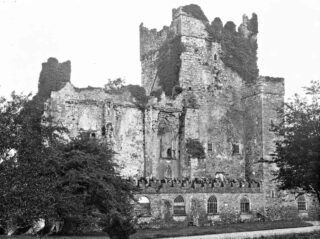
The abbey was founded by William Marshal, known to history as The Greatest Knight in Christendom, in answer to a vow made in time of tempest. Marshal and his retinue were coming towards the end of their journey to Ireland when they were caught in a violent storm. William called to his creator asking for safe delivery and vowing that, if he and his companions were saved, he would build a monastery at the location where they made dry land. The weary travellers landed at Bannow Bay and William Marshal fulfilled his vow through the foundation of Tintern Abbey, known as Tintern de Voto, or Tintern of the Vow. The abbey was founded in 1200 and was initially populated by Cistercian monks from Tintern Abbey in Wales.
The monks of the Cistercian Order, founded in France in 1098, had gained a reputation across Europe as austere, hardworking and resourceful. Self-sufficiency as far as possible coupled with a long term view allowed the monks to strive for perfection in their construction and their agricultural endeavours. The Cistercians followed the three-year crop rotation system, introduced new animal breeds and were arguably the first to introduce gothic architecture to Ireland. The monks regularly diverted rivers to provide water for use in the abbey and for sanitation and pushed the known boundaries of engineering practices. The hallmark of Cistercian church building is a simplicity that is a thing of beauty in its own right.
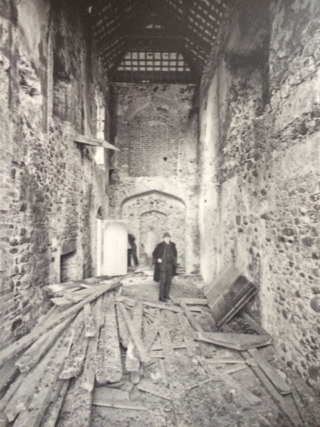
All Cistercian monasteries were dedicated to St Mary and a Lady Chapel was often incorporated into the building. The Lady Chapel at Tintern is a three-bay structure with some beautiful features on the ribbed and groined ceiling. The display on view includes video footage of the earliest conservation works undertaken by the State, at a time when health and safety was not so high on the agenda.
The monastery was suppressed by King Henry VIII in 1536 and the church, cloister and associated buildings along with extensive lands ultimately passed into the hands of Sir Anthony Colclough who turned the monastery into a private dwelling. Anthony was knighted by Queen Elizabeth I in 1581 and following his death was interred in the small church situated near to the battlemented bridge, just a short stroll from the abbey and accessible to visitors today.
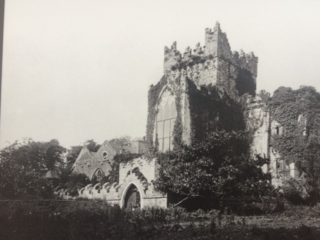
Anthony had twelve children, one of whom was Thomas. Sir Thomas continued with the improvements at Tintern, one of which involved the introduction of oysters from Milford Haven to Bannow Bay about the year 1600. Thomas was twice married. His first wife, Martha Loftus was a member of the Reformed Church with whom Thomas had one son named Adam. Thomas’ second wife was Eleanor Bagenal and they had four children together, all of whom were raised as Catholics.
Adam Colclough inherited the estates in 1624 but the lands became divided along religious lines between the Protestant and Catholic branches of the family. The Catholic branch held the lands in an area known as The Duffry, situated in the foothills of the Blackstairs mountains, near to Enniscorthy. During the 1641 rebellion 200 local Protestant people took refuge in Tintern which was garrisoned by forty soldiers from Duncannon Fort situated nearby. Shortly afterwards the Catholic branch of the family laid siege to the Protestant branch who were in residence in Tintern Abbey. Dudley Colclough and his two brothers John and Anthony took control of the abbey following a two-week siege. Following Oliver Cromwell’s arrival in 1649 Dudley was banished to Connaught and he ultimately died in exile in France. The lands were re-united in that same year when Caesar Colclough inherited and he held title until 1684. For almost a century after Caesar’s death the abbey and lands were passed through complicated lines of inheritance as owners died without issue.
The eighteenth century story of Tintern is dominated by the legendary Great Caesar. Renowned as an outstanding sportsman and athlete and a magnanimous landlord beloved by his people Caesar inherited the Duffry lands at sixteen years of age and the Tintern lands followed some years later. One action of Caesar stands in local folklore above all others when he brought a hurling team to play a challenge match at the behest of King George. The Wexford men wore yellow sashes to differentiate the teams and the story goes that the skill displayed by Colclough’s team caused the King or Queen to call out ‘Come on, the yellow bellies!’ a name still applied to natives of the county.
During the period of religious oppression under the Penal laws newly ordained priests were given employment on the Tintern estates where many worked as gardeners and farm hands and quietly carried out their ministry without fear of their landlord. In the eighteenth century the Colcloughs gave a site and a substantial donation towards the erection of the Catholic Church in Ballycullane, the family also established a non-denominational school in the locality. The period of unity and accord was not destined to last.
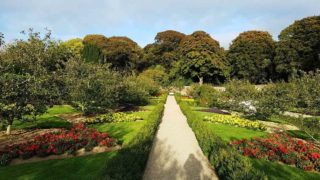
After the death of Great Caesar the lands were again divided along religious lines. Ultimately Vesey inherited the Tintern lands, however his tenure heralded a turbulent time. Vesey squandered and mortgaged his inheritance while attaining fame for his illicit activities. Vesey’s son John took control after his father’s passing. John had a legal background and tried to turn the fortunes of the estate around. John was involved in the establishment of a bank in nearby New Ross and he launched a flour milling enterprise at Tintern. The flour mill was accidentally burned in the late 1800’s but the walls of the mill still survive. In addition to constructing a limekiln and a brick manufacturing industry John also established a village of Tintern. Home to artisans and craft workers, records indicate the village was home to thirty-six looms and that ‘[l]inen, diaper, check, Jane and woollens, were woven in it’, in addition a yarn market and market house were located in the village. Tintern was also home to slaters, masons, a butcher, a shoemaker and smiths. John had a keen interest in landscaping and gardening and by 1795 had established a nursery to grow seedlings for the extensive plantations he envisaged. It is John we must thank for the tantalising glimpse we get of the abbey from the entrance driveway as he created a wide lawn in front of the abbey surrounded by belts of woodland. This was a key element of the landscaping style of the period. John also levelled ditches and established defined walks around the demesne. In a letter dated to 1801 John referred to a ‘fine parcel of young fruit trees ready to be put against the walls’, another mention of ‘wall trees’ would seem to indicate that the 2.5 acre stone and brick lined walled garden had been constructed by this time.
In addition to the external improvements John’s impact on the old abbey is still plain to see. John transformed the nave into a commodious residence. The Lady Chapel was converted into the family kitchen and the large room above was used as the family library. A massive gothic window was inserted in the west end of the room and in recent years extensive conservation works were carried out on this window by the National Monuments team, based in the Office of Public Works regional depot in Kilkenny. The window was reinstated in 2011 and has become a much admired feature of the present abbey. John Colclough did not fare so well. Killed in a duel in 1806 John was shot dead by his fiancé’s brother; William Alcock. John’s body was waked for a week at the family residence in Wexford town, situated at the present entrance to White’s Hotel. John was buried at Tintern, presumably in the family vault following a funeral said to have been the largest ever seen in that part of Ireland. His fiancé died some years later and her funeral took the form of a torch-lit procession at midnight to the Alcock family mansion. John was one of four members of the Colclough family to have been killed in a duel.
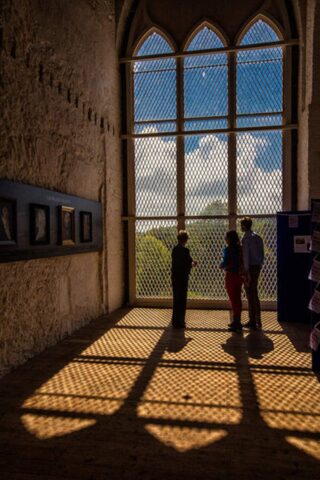
The estate was inherited by another Caesar Colclough. This Caesar returned from political exile in France after the abdication of Napolean in 1814 and became MP for Wexford. In 1812 John Bernard Trotter, a visitor to the estate, wrote that there ‘were some signs of decay in the village’, presumably the decay worsened and looking towards improving the estate, Caesar relocated the old village of Tintern to nearby Saltmills, thus establishing the village that exists today. From about 1818 until his death in 1842 Caesar was an absentee landlord, spending most of his time between England and France. It was strongly suspected that Caesars wife, Jane Kirwan, who had come to dominate his every move, was also responsible for his death. It was believed by many that Jane had poisoned her husband and in doing so ended the male line. The Great Lawsuits ensued bringing financial demands and hardships from which Tintern never recovered. One outcome of the court proceedings was the declaration that, through the male line, the Canadian Mary Colclough was the rightful owner of the estate.
The last of the line, Mary’s granddaughter Lucie Marie, inherited Tintern in 1912 and continued to live in the old abbey but times had changed, the finances had run dry, and by 1959 the vast majority of the land had been sold to the Land Commission. Having lived in the family residence for 70 years the decision was taken to move to nearby Saltmills, the village founded by her ancestor. In 1983 Lucie Marie Biddulph Colclough, known for her quiet compassion, her music and her interest in her Church, died in Ely House, Wexford.

Today the area surrounding Tintern Abbey is a haven for wildlife, an amenity for recreation and a space for quiet contemplation. The woodlands established and bequeathed by the family are managed on behalf of the people of Ireland by Coillte. The restoration of the walled garden is progressing under the management and vision of Hook Tourism. The original layout of the garden has been reinstated as it was in 1838.
About the Author
Breda Lynch is the Supervisor Guide of a number of OPW National Monument sites in the south-east. A published author, Breda was awarded a PhD in history by Maynooth University in 2008 and since then has conducted extensive research and lectured widely on Irish church history, with particular emphasis on the Cistercian Order.


